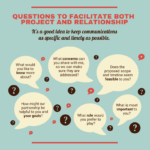I. Understanding PET Plastic: Benefits and Recycling Process
II. Creative Upcycling Ideas for PET Plastic
III. Tips for Successful Upcycling and Sustainable Practices
Understanding PET Plastic: Benefits and Recycling Process
Hey there! Let’s dive into the fascinating world of PET plastic, a material you might encounter every day but may not think much about. PET, or polyethylene terephthalate, is one of the most commonly used plastics in the world, especially in packaging. It’s the go-to material for everything from beverage bottles to food containers. But what makes it so special? Let’s break it down!
Benefits of PET Plastic
PET plastic boasts a number of advantages that make it a popular choice for manufacturers and consumers alike:
- Lightweight: PET is incredibly lightweight, which makes it convenient to transport and reduces energy costs during shipping.
- Durable: Despite its lightness, PET is strong and resistant to impact, ensuring your beverages and food stay safe and secure.
- Recyclability: One of the best features of PET is its recyclability. It can be recycled multiple times without losing its quality, making it a sustainable choice.
- Barrier Properties: PET provides an excellent barrier against moisture and gases, helping to keep products fresh for longer.
- Clarity: It’s crystal clear, which makes it visually appealing for packaging, allowing consumers to see what they are buying.
The Recycling Process of PET Plastic
Recycling PET is a straightforward yet vital process that contributes significantly to environmental sustainability. Here’s how it works:
- Collection: The journey begins with the collection of PET bottles and containers. This can happen through curbside recycling programs or drop-off centers.
- Sorting: Once collected, the PET is sorted from other types of plastics and contaminants. This step is crucial to ensure the purity of the recycled material.
- Cleaning: The sorted PET is then washed to remove any labels, dirt, or residual contents, preparing it for the next step.
- Shredding: After cleaning, the plastic is shredded into small flakes. This makes it easier to process and recycle.
- Reprocessing: The flakes are melted down and can be reformed into new PET products, such as clothing fibers, new containers, or even insulation materials.
The recycling of PET plastic not only conserves resources but also saves energy when compared to producing new plastic from raw materials. It’s a win-win for both the environment and the economy!
Why Should You Care?
Understanding PET and its recycling process can empower you as a consumer. By recycling your PET products properly, you help reduce landfill waste and promote a circular economy where materials are reused rather than discarded. So, the next time you finish that refreshing drink, remember to toss your PET bottle into the recycling bin and contribute to a sustainable future!
Creative Upcycling Ideas for PET Plastic
Hey there, eco-warrior! If you’re looking to step up your sustainability game, upcycling PET plastic is a fantastic way to get started. Not only can you reduce waste, but you also have a great opportunity to express your creativity! Let’s dive into some fun and innovative ways to repurpose those pesky plastic bottles and containers you have lying around.
1. Stylish Planters
Have a green thumb or just want to brighten up your living space? Turn those empty PET bottles into adorable planters! Here’s how:
- Cut the bottle in half and use the bottom section for planting.
- Poke a few drainage holes in the bottom to prevent overwatering.
- Decorate the outside with paint or twine to make it stylish.
Now you have a unique planter that not only looks great but also helps the environment!
2. DIY Bird Feeders
Want to attract some feathered friends to your backyard? Making a bird feeder from PET plastic is simpler than you think!
- Start with a two-liter soda bottle. Clean it out and dry it thoroughly.
- Cut small holes in the sides where you can insert wooden dowels or sticks for perches.
- Fill the bottle with birdseed, and then hang it outside using some string or wire.
This project not only gives the birds a safe place to eat but also adds charm to your garden!
3. Storage Solutions
Need a little organization in your life? PET plastic can be transformed into handy storage containers! Here are some ideas:
- Use the tops of plastic bottles as small storage cups for office supplies like paper clips and pins.
- Stack and glue several bottles together to create a tiered storage system for your crafting supplies.
- Cut larger bottles into different sizes for organizing kids’ toys or bathroom essentials.
These storage solutions are not only functional but also visually appealing, making your space feel more organized.
4. Fun Art Projects
Unleash your inner artist by turning PET plastic into stunning art pieces! Here’s how to get started:
- Cut the plastic into various shapes and sizes to create a mosaic.
- Paint the pieces in vibrant colors and arrange them into a beautiful design on a canvas or wall.
- Try making sculptures or 3D art by layering different shapes and colors!
Art is a fantastic way to express yourself, and using recycled materials makes it even more special!
5. Fashion Accessories
Why not wear your sustainability pride? Upcycling PET plastic into jewelry or accessories can be a fun way to stand out! Consider these ideas:
- Cut and shape plastic into unique earrings or pendants.
- Weave strips of plastic into trendy bracelets or headbands.
- Create chic brooches by layering and gluing different plastic shapes together.
These accessories not only look fabulous but also spark conversations about eco-friendliness!
So, there you have it! Upcycling PET plastic doesn’t have to be a chore; it can be a fun and rewarding experience. Get creative, have fun, and remember that every little bit helps in the fight against plastic waste!
Tips for Successful Upcycling and Sustainable Practices
So, you’ve decided to dive into the world of upcycling PET plastic—fantastic choice! Not only will you be contributing to a more sustainable planet, but you’ll also unleash your creativity in ways you never imagined. To set you up for success on this eco-friendly journey, here are some tips that will help you make the most out of your upcycling projects while sticking to sustainable practices.
1. Start Small and Simple
If you’re new to upcycling, it’s a good idea to start with small and manageable projects. This way, you can build your confidence without feeling overwhelmed. Here are a few ideas:
- Planters: Turn old plastic bottles into charming planters for herbs or succulents.
- Storage Bins: Repurpose larger containers as stylish storage solutions for your craft supplies or toys.
2. Gather Your Tools and Materials
Before you jump into your first project, it’s essential to gather all the necessary tools and materials. Some essentials include:
- Scissors or a craft knife
- Hot glue gun and glue sticks
- Paints and brushes for decoration
- Sandpaper for smoothing edges
Having everything ready will make your upcycling experience smoother and more enjoyable!
3. Embrace Creativity and Experimentation
One of the most exciting parts of upcycling is the opportunity to be creative! Don’t hesitate to experiment with different ideas. Here are some ways to let your imagination run wild:
- Mix and Match: Combine different types of plastics or materials to create something unique.
- Customize: Use paints, stickers, or fabric to give your upcycled items a personal touch.
Remember, there’s no “right” way to upcycle—what matters is that you enjoy the process and let your creativity shine!
4. Focus on Functionality
While aesthetics are important, functionality should also be a priority. Think about how you can make your upcycled products useful. For example:
- Turn a large plastic container into a dog food dispenser.
- Use bottle caps to create a unique bulletin board.
By focusing on usefulness, your upcycled creations can serve practical purposes while being eco-friendly!
5. Share and Inspire
Once you’ve completed your upcycling project, why not share it with others? Social media platforms like Instagram or Pinterest are fantastic for showcasing your creative work. You can inspire friends or even connect with a community of fellow upcyclers! Plus, sharing your journey can encourage others to join the movement for sustainability.
6. Keep Sustainability at Heart
Lastly, always keep sustainability in mind. Use eco-friendly paints, glues, and finishes whenever possible. And remember, upcycling is about reducing waste; try to source your materials from items you already have at home. The more you incorporate sustainable practices into your upcycling projects, the more rewarding your experience will be!
So, there you have it! With these tips, you’re well-equipped to tackle your upcycling journey with confidence and creativity. Happy crafting!







Comments